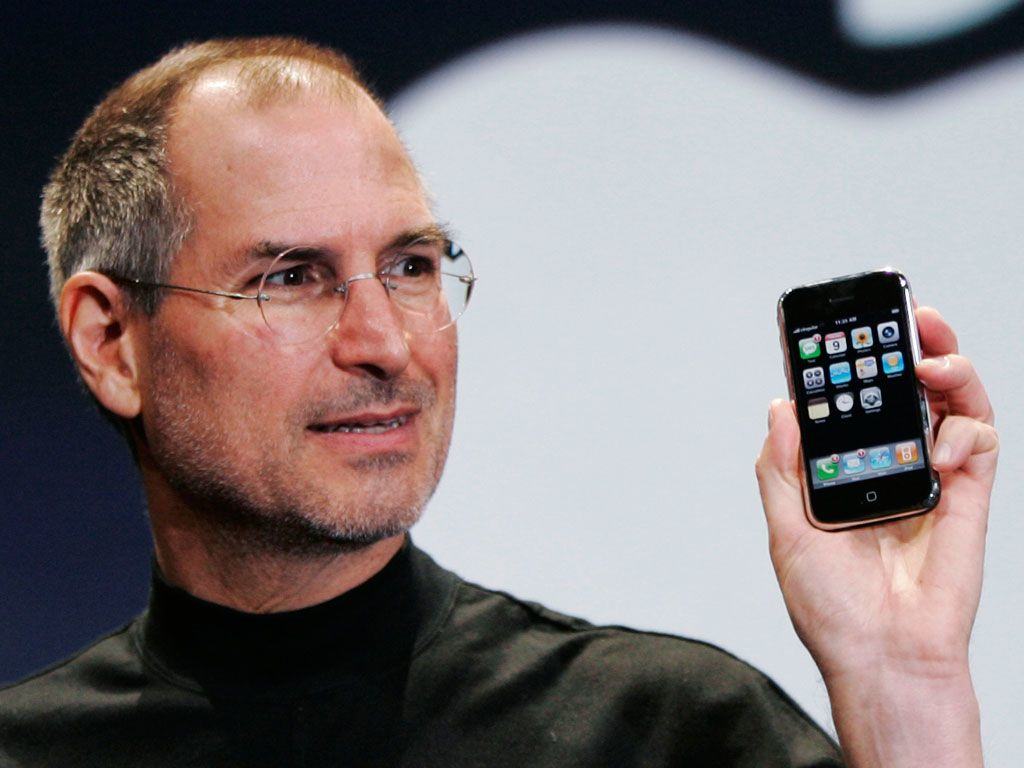Since it made its debut in 2007, the iPhone has relied on just one physical button for returning to the Home screen. But if Steve Jobs had his way, it would have had two.
The Apple co-founder and former CEO tried to convince other executives that the iPhone also needed an Android-style back button for navigation.
This post contains affiliate links. Cult of Mac may earn a commission when you use our links to buy items.
iOS is the only modern smartphone operating system that relies on just one button; Android and Windows Mobile both offer a back button, though many devices make these virtual. It’s been like that since the beginning, and we all became quickly accustomed to it.
But Jobs didn’t think that would be the case. According to The One Device: The Secret History of the iPhone, a new book by reporter Brian Merchant, the former Apple chief believed that the device also needed a back button for ease of navigation.
Imran Chaudhri, a veteran designer who spent 19 years with Apple’s Human Interface Team, convinced Jobs to change his mind. He explained just one button that did the same thing every time would be simpler, and that it was “all about generating trust and predictability.”
“Again, that came down to a trust issue,” Chaudhri says, “that people could trust the device to do what they wanted it to do. Part of the problem with other phones was the features were buried in menus, they were too complex.”
Chaudhri argued that a back button could also complicate matters, and eventually, Jobs agreed. “I won that argument,” Chaudhri told Merchant.
This isn’t the first example of Jobs being persuaded to change his mind on ideas for the original iPhone. Merchant’s book reveals how the device was very much a team effort, and not the result of Jobs’s genius alone.
The One Device: The Secret History of the iPhone is available today in the U.S., and releases on Thursday, June 22, in the U.K. You can purchase it now in digital form or as a paperback on Amazon, but beware that the reviews are a mixed bag.
“I missed the parts of the story that Merchant left out,” writes Jefferson Graham of USA Today.
“He decided not to focus on the birth and growth of Google’s Android operating system, which now has an 85 percent market share, or the rise of Apple’s chief rival Samsung, and the Galaxy S line of smartphones.
“He skips out on how Tim Cook, who took over as CEO of Apple after Jobs’ death in 2011, has been skimpy on innovation, but has built the iPhone into an even bigger business that now represents two-thirds of Apple’s revenues.”
“But when he gets back to the actual iPhone’s creation, Merchant tells a far richer story than I — having covered Apple for years as a journalist — have seen before,” writes Lev Grossman of The New York Times.
“If you’ve ever worked on a hopeless project that felt like it was going nowhere, you will draw spiritual strength from Merchant’s account of life in the Purple trenches. It includes fascinating dead ends and might-have-beens (a prototype based on the original iPod’s click wheel, backlit in blue and orange); personal sacrifices (“The iPhone is the reason I’m divorced”); obscure technical hurdles (the phone’s infrared proximity sensor, which turns the screen off when it’s near your head, wouldn’t recognize dark hair); backstage tension at the launch (I was actually there, watching Jobs rehearse the famous iPhone keynote, but apparently missed everything); even a symbolic onstage assassination (when Jobs publicly demonstrated swiping to delete a contact, he used Apple vice president Tony Fadell’s name, foreshadowing Fadell’s imminent departure).”
Stories within the book have also been called into question already, like the one claiming Phil Schiller wanted the original iPhone to ship with a physical keyboard like those found on BlackBerry devices and other smartphones of the time.
“Not true,” Schiller tweeted earlier this month. “Don’t believe everything you read.”
Via: BGR


